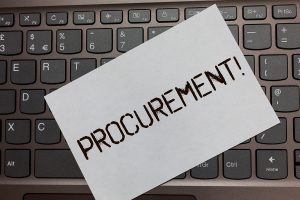 Over the past year, there has been a shift in the way government approaches the cloud. No longer are agencies asked to go "cloud first," they are now urged to be "cloud smart." This change is not just a matter of semantics; it is a different way of thinking. Rather than choosing a cloud solution to meet mandates, agencies are examining whether the cloud is the right platform for the application or system in question. Cloud Smart also means picking the right kind of cloud - public, private, or hybrid/multi cloud to meet user, administration, and security needs.
Over the past year, there has been a shift in the way government approaches the cloud. No longer are agencies asked to go "cloud first," they are now urged to be "cloud smart." This change is not just a matter of semantics; it is a different way of thinking. Rather than choosing a cloud solution to meet mandates, agencies are examining whether the cloud is the right platform for the application or system in question. Cloud Smart also means picking the right kind of cloud - public, private, or hybrid/multi cloud to meet user, administration, and security needs.
One way to be Cloud Smart is to follow FedRAMP guidance. While this program is not without its challenges (including the speed at which technologies get approval), it is still a valuable tool to ensure that industry standards and security protocols are met. Participation in the program is growing with 150 participating agencies and over 130 FedRAMP-authorized cloud service offerings.
While guidance around how to proceed to the cloud is evolving (along with the cloud technology), agencies are pushing forward and finding their smart path to cloud and, more importantly, creating new ways to interact with their constituents. For example, the U.S. Department of Agriculture's (USDA) Farm Production and Conservation division made the shift to a commercial platform-as-a-service (PaaS) for Farmers.gov. This site "allows farmers, ranchers, foresters and agriculture producers to register their businesses electronically and gain personalized access to the services they need to manage their operations." By using cloud technologies, USDA found they could save their developers time, enabling them to focus on configuring, rather than coding.
There are several events that feature examples of these cloud successes and discuss how to overcome technical, policy, and cultural barriers to smart cloud adoption.
- DC CloudWeek (June 3-7, 2019; Washington, DC) -- This SXSW-style citywide festival brings together thousands of government and tech leaders from around the nation to share how the cloud is transforming government, academia, nonprofits, and the private sector. It includes dozens of community conferences, events, and parties.
- AWS Public Sector Summit (June 11-12, 2019; Washington, DC) -- This event brings together innovators who are changing the world with cloud computing to share their successes and lessons learned to guide wider cloud adoption in government. The conference aims to send attendees back to their office with new strategies and techniques for kicking off new projects, maximizing budgets, and achieving mission goals.
- ATARC Federal Cloud and Infrastructure Summit (June 25, 2019; Washington, DC) -- This educational, one-day symposium will examine the cloud tools and techniques being used by the Federal Government to provide agencies with greater efficiency and cost savings. The morning session will feature speakers and panels with government thought leaders, while the afternoon includes the MITRE-ATARC Cloud Collaboration Symposium, where government, academic, and industry subject matter experts will examine cloud and data center challenge topics.
- 2019 Cyber Security Brainstorm "Cyber Strong: Cyber's New Frontier" (August 8, 2019; Washington, DC) -- This half-day program will discuss integrating cloud and other next-gen technologies, strategies for building cyber strength, and preparing the workforce for these technological changes.
- KubeCon | CloudNativeCon (November 18-21, 2019; San Diego, CA) -- The Cloud Native Computing Foundation's flagship conference gathers adopters and technologists from leading open source and cloud native communities to further the education and advancement of cloud
Let us know your go-to events for cloud information with details in the comments.



 The
The 
 Don't let the title mislead you, today we're not talking about acquiring Agile services (though, that plays a role) but rather about how government is making their procurement process more flexible and dynamic to meet the needs of federal teams and citizens alike. We've
Don't let the title mislead you, today we're not talking about acquiring Agile services (though, that plays a role) but rather about how government is making their procurement process more flexible and dynamic to meet the needs of federal teams and citizens alike. We've 
